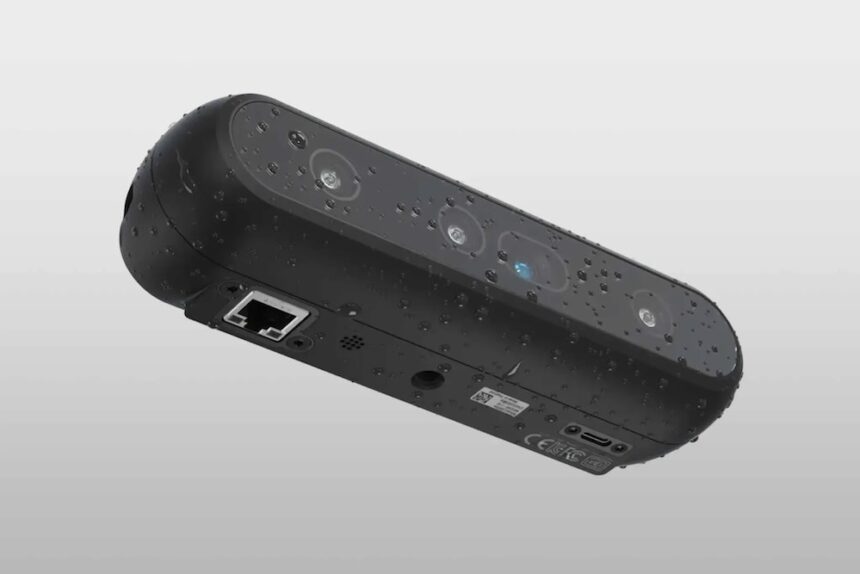RealSense D555 Depth Camera. | Credit: RealSense
RealSense, freshly independent after spinning out from Intel last month, is deepening its ties with NVIDIA. RealSense told The Robot Report it is now being far more public about its collaboration with NVIDIA — something that was essentially impossible while part of Intel, given the competitive nature of the two semiconductor giants.
Nadav Orbach, CEO of RealSense, told The Robot Report last month one of the limitations of being inside Intel was the ability for partner with certain companies. Perhaps this is one he was alluding to.
The partnership centers around the new RealSense D555 depth camera and NVIDIA’s robotics platforms, including the new Jetson Thor. The D555 debuts the company’s v5 Vision Processor with on-chip Power over Ethernet (PoE), global shutter, integrated IMU, and native ROS 2 support. The D555 also enables direct streaming into NVIDIA’s Holoscan for ultra-low-latency sensor fusion and real-time compute.
RealSense’s Chris Mathieu said these features will further enhance obstacle avoidance, safe human–robot interaction, and navigation for both autonomous mobile robots (AMRs) and humanoids.
On the compute side, the integration leverages NVIDIA Jetson Thor, which is powered by the Blackwell GPU architecture and delivers up to 2070 teraflops of AI performance within a 130W power envelope. Compared with Jetson Orin, NVIDIA said Jetson Thor provides 7.5x higher AI compute and 3.5x better energy efficiency, enabling robotics developers to run large-scale generative AI models and advanced perception pipelines at the edge.
RealSense said the collaboration provides three main benefits for developers:
- Enhanced simulation-to-deployment: Native depth data streaming into NVIDIA Isaac Sim accelerates the transition from prototype to production
- Validated system architectures: Optimized pipelines on Jetson Thor ensure maximum performance for real-world robotics applications
- Real-time sensor fusion: Integration with Holoscan Sensor Bridge unlocks ultra-low-latency perception critical for robots working alongside humans
“This initiative cements RealSense’s role as the perception platform of choice for AMRs and humanoids,” said Orbach. “By providing native integration and performance optimizations with NVIDIA Thor and Holoscan Sensor Bridge, we are accelerating the mainstream adoption of physical AI. Together, we are enabling the robotics industry to unlock the extraordinary potential of physical AI and drive the future of intelligent machines.”
Chris Matthieu, VP of the developer ecosystem for RealSense, said early demand for the D555 is strong. He told The Robot Report the company quickly sold out the first production run of D555. He said new shipments are expected in mid-September. According to Matthieu, engineers who have tested the system highlighted near-zero latency from camera to Jetson GPU, enabling robots to think and react faster than the human eye — up to 90 frames per second, compared with an estimated 50–60 FPS in human vision.
That performance, Matthieu noted, could translate into safer AMRs that can navigate crowded warehouses, humanoids capable of real-time collaboration with people, and higher throughput in logistics and manufacturing environments. “Faster perception and faster decision-making could mean robots not only work more safely but also outperform humans by factors of 2–3x in productivity,” he said.
RealSense said its partnership with NVIDIA is a critical step in scaling robots in real-world applications. “This is just the beginning,” Matthieu said. “What comes next will blow our minds.”

























